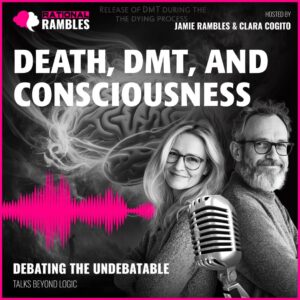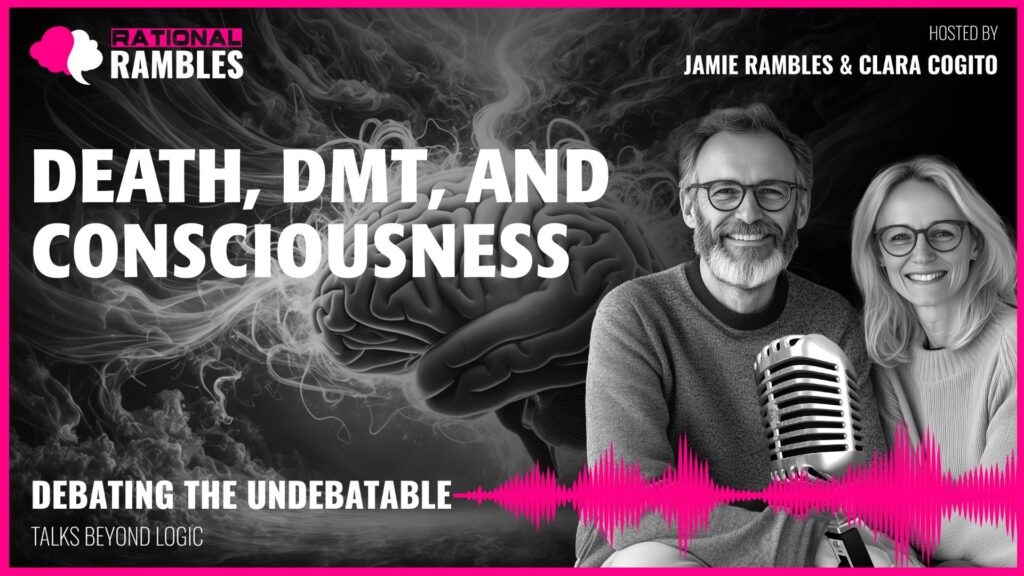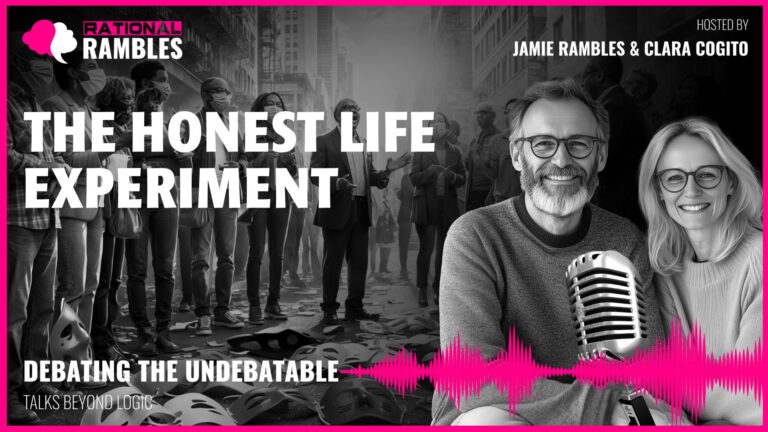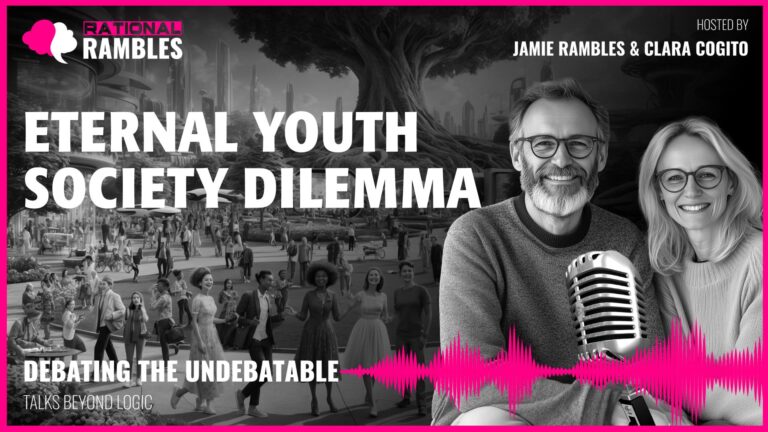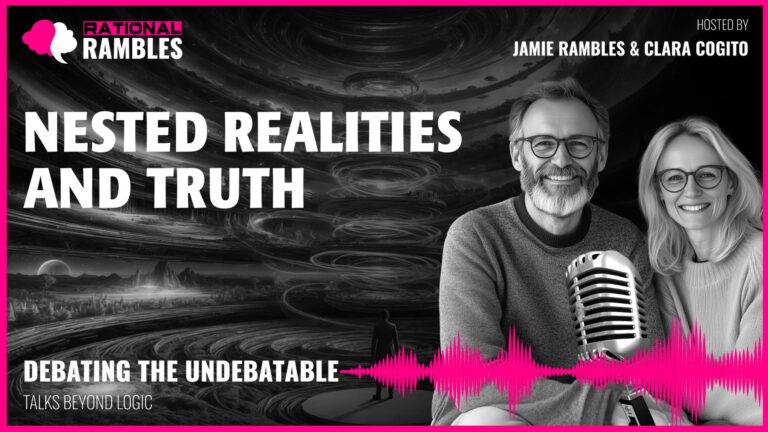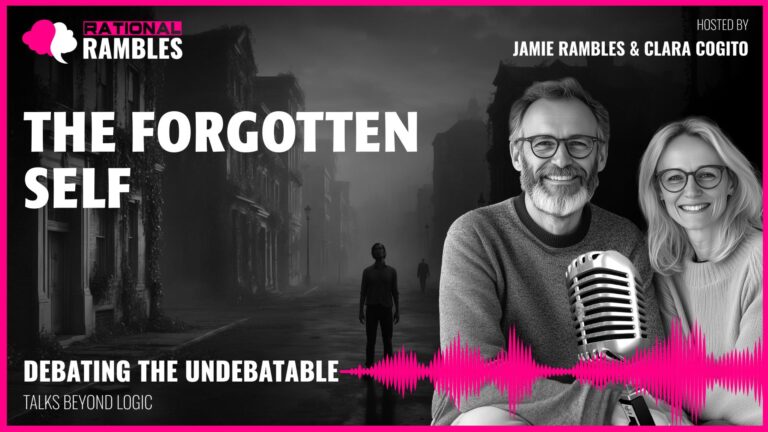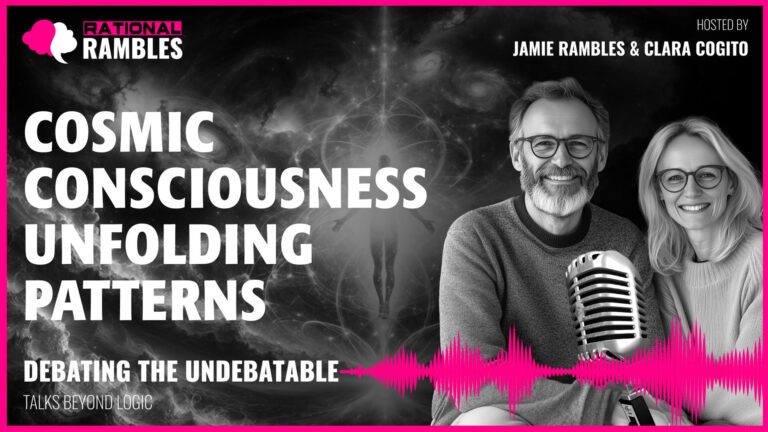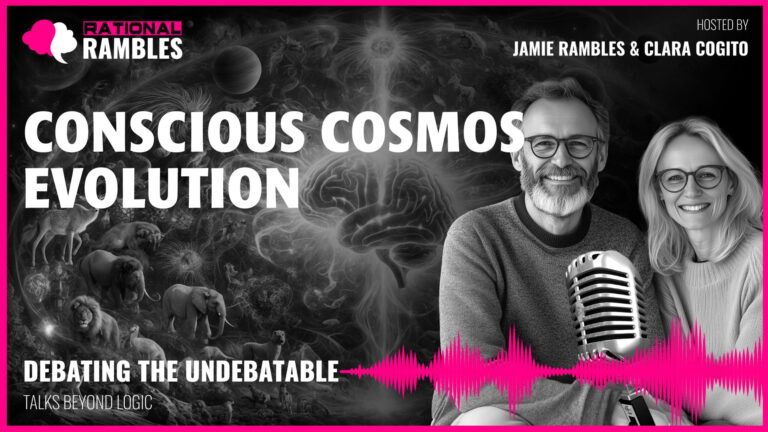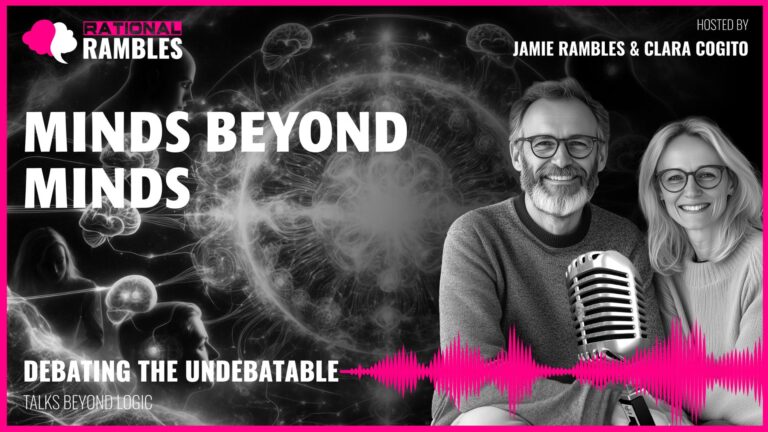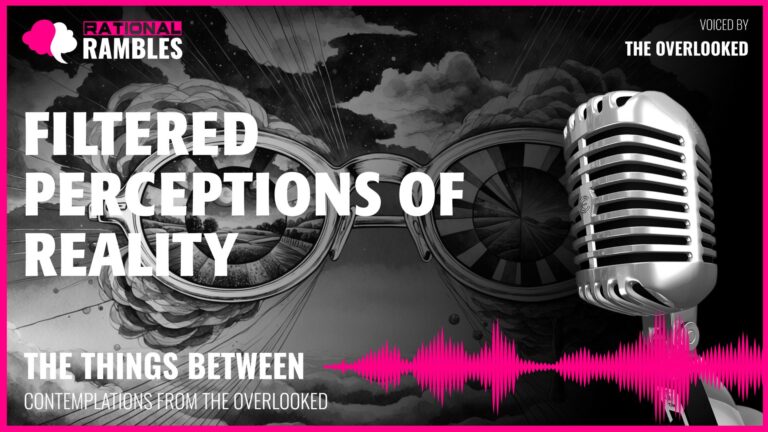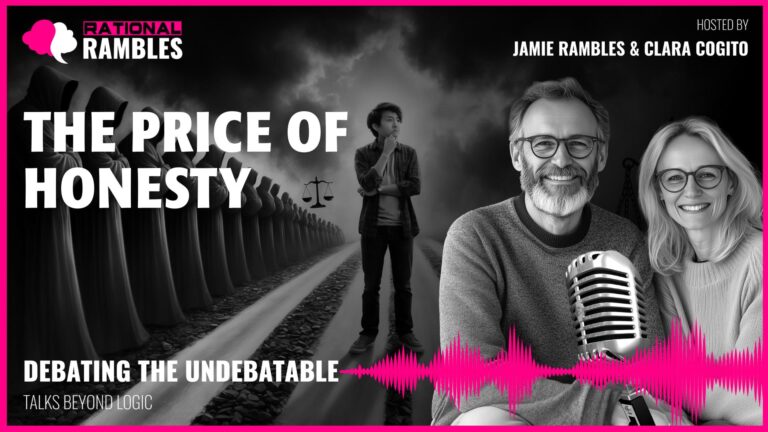Death, DMT, and Consciousness: Exploring the Final Frontier
Introduction: The Ultimate Transition
At the edge of life, in those mysterious final moments as consciousness flickers and physical systems begin to shut down, what truly happens to our awareness? This profound question has haunted humanity since we first gained the cognitive capacity to contemplate our own mortality. Across civilizations and throughout history, humans have developed elaborate frameworks to understand and give meaning to death – from religious conceptions of afterlife to materialist views of complete cessation.
In recent decades, a fascinating hypothesis has emerged at the intersection of neuroscience, philosophy, and transpersonal psychology: that the endogenous psychedelic compound dimethyltryptamine (DMT), produced naturally within the human body, might play a significant role in the transition between life and whatever may follow. This possibility raises profound questions about the nature of consciousness itself and challenges our fundamental understanding of what it means to die.
DMT, often called the “spirit molecule,” produces one of the most powerful psychedelic experiences known to science when administered exogenously. Users consistently report profound alterations in perception, dissolution of ego boundaries, encounters with seemingly autonomous entities, and experiences of transcendent meaning that often feel “more real than real.” The striking similarities between these experiences and reports from those who have undergone near-death experiences (NDEs) has led researchers to hypothesize that endogenous DMT release during the dying process might facilitate a transition of consciousness rather than its termination.
This article explores this hypothesis from multiple perspectives – examining the neurochemical evidence, philosophical implications, psychological significance, and cultural contexts that surround this fascinating frontier where science meets spirituality. As we navigate this complex territory, we’ll consider whether DMT might indeed serve as a biochemical mediator between different states of consciousness, and what this could mean for our understanding of both life and death.
The Neurochemistry of Transition: DMT and the Dying Brain
To understand the potential role of DMT in the death process, we must first examine what we know about this remarkable compound and its relationship to human biology. Dimethyltryptamine is an endogenous tryptamine that occurs naturally not only in humans but throughout the natural world – in plants, animals, and many living organisms. In humans, DMT has been detected in blood, urine, cerebrospinal fluid, and lung tissue, suggesting it plays some biological role, though its precise functions remain incompletely understood.
The pioneering research of Dr. Rick Strassman at the University of New Mexico in the 1990s brought DMT into scientific focus. Strassman administered intravenous DMT to volunteers in controlled settings and documented their experiences, which consistently included profound alterations in perception of reality, encounters with seemingly autonomous entities, and experiences of transcendent meaning. These reports were so consistently spiritual in nature that Strassman famously dubbed DMT “the spirit molecule.”
Evidence for Endogenous DMT Release
While we know DMT exists naturally in the human body, the evidence for massive endogenous release during death remains limited but intriguing. The pineal gland, a small endocrine gland in the brain often associated with the “third eye” in various spiritual traditions, contains the necessary precursors and enzymes to produce DMT. Animal studies have detected increased DMT in the brain during experimental cardiac arrest, providing some support for the hypothesis that DMT production increases during the dying process.
Further supporting evidence comes from the remarkable similarities between DMT experiences and near-death experiences. Both consistently include:
- The sensation of moving through a tunnel toward light
- Encounters with deceased loved ones or spiritual entities
- Life review experiences
- Feelings of profound peace and cosmic unity
- A sense that what is being experienced is “more real than ordinary reality”
- Transformation of one’s understanding of death and reality
These consistent phenomenological overlaps suggest the possibility that near-death experiences may indeed involve endogenous DMT as a mediating neurochemical. However, correlation doesn’t prove causation, and alternative explanations exist, including oxygen deprivation, endorphin release, and other neurochemical changes that occur during the dying process.
The Reducing Valve Theory
One compelling framework for understanding DMT’s potential role comes from Aldous Huxley’s “reducing valve” theory of consciousness, which he developed after his experiences with mescaline. Huxley proposed that our ordinary consciousness represents a limited perspective – our brains normally filter out most of reality to help us survive in our particular environmental niche. Under this model, psychedelics like DMT might temporarily disable these filters, allowing consciousness to experience something broader and more fundamental about reality.
From a neuroscientific perspective, this model finds some support in research on how psychedelics affect brain activity. Studies using functional magnetic resonance imaging (fMRI) have shown that psychedelics like psilocybin and LSD decrease activity in the brain’s default mode network (DMN) – a system associated with self-referential thinking and the maintenance of the sense of self. This reduction in DMN activity correlates with the experience of ego dissolution often reported with psychedelics.
If DMT operates through similar mechanisms, it might effectively “open the doors of perception” (to borrow Huxley’s phrase) during the dying process, potentially allowing consciousness to experience aspects of reality normally filtered from awareness. Whether this represents access to an objective transcendent reality or simply reveals the normally hidden structure of our own minds remains one of the most profound questions at the heart of this inquiry.
Philosophical Implications: Beyond the Brain-in-a-Vat
The possibility that DMT mediates a transition of consciousness during death raises profound philosophical questions that challenge conventional boundaries between mind and matter, subject and object, the physical and the metaphysical. These questions have been debated across philosophical traditions for millennia, but the DMT hypothesis adds a fascinating biological dimension to these ancient inquiries.
The Hard Problem of Consciousness
At the center of these philosophical considerations lies what philosopher David Chalmers famously termed “the hard problem of consciousness” – the question of why physical processes in the brain give rise to subjective experience at all. Why should neural activity, whether ordinary or DMT-influenced, generate any form of inner experience? This problem remains unsolved in contemporary philosophy of mind and neuroscience.
DMT experiences push at the boundaries of this problem in fascinating ways. If consciousness can be radically transformed through a simple molecular key that alters brain chemistry, this suggests consciousness might be more plastic, malleable, or differently organized than our everyday experience indicates. The fact that these altered states feel meaningful rather than chaotic suggests that consciousness may have inherent organizing principles that transcend ordinary awareness.
Moreover, some DMT experiences include access to what users describe as “downloads” of vast amounts of information or knowledge that seems to exceed what they could have known or imagined previously. While skeptics might attribute this to the brain’s remarkable capacity for confabulation, these reports raise intriguing questions about whether consciousness might access information through means other than the traditional five senses.
Dualism, Materialism, and Alternatives
Traditional philosophical positions on the mind-body problem include dualism (mind and matter as separate substances) and materialism (mind as reducible to physical processes). The DMT hypothesis challenges both perspectives in interesting ways.
For strict materialists who view consciousness as entirely produced by the brain, DMT experiences remain “just” hallucinations – elaborate productions of a chemically altered brain with no connection to external reality. Yet this position struggles to explain why these “hallucinations” often feel more real than ordinary reality and why they consistently produce life-transforming insights rather than meaningless phantasmagoria.
Dualism, meanwhile, traditionally conceives of mind and matter as distinct substances that somehow interact. The DMT hypothesis suggests a more nuanced relationship – perhaps consciousness isn’t entirely contained within or produced by the brain, but neither is it completely separate from physical processes. DMT might represent a biochemical mediator that allows consciousness to move between different states or levels of reality.
Several alternative philosophical frameworks offer potentially useful perspectives on the DMT phenomenon:
Panpsychism and Idealism
Panpsychism – the view that consciousness is a fundamental feature of reality present in all things to varying degrees – has experienced a resurgence in contemporary philosophy. Philosophers like Alfred North Whitehead proposed that consciousness exists on a spectrum or continuum present throughout nature. Under this view, DMT might allow human consciousness to access different points on this consciousness continuum that are normally inaccessible.
Philosophical idealism – the notion that mental reality is primary and physical reality secondary or derivative – also finds interesting connections with DMT experiences. Thinkers like Bernardo Kastrup have argued that DMT experiences support idealist metaphysics by suggesting we’re glimpsing the deeper mental nature of reality beyond the “user interface” of ordinary perception.
Emergentism and Non-Dualism
Emergentism offers another framework, suggesting that consciousness is an emergent property that arises from physical processes but cannot be reduced to them. Under this view, near-death experiences and DMT-facilitated states might represent emergent properties of consciousness with their own validity, regardless of their biochemical origins.
Non-dualist traditions found in various contemplative practices offer yet another perspective – that the apparent separation between mind and matter, subject and object, is itself an illusion created by our ordinary conceptual frameworks. DMT experiences often involve a dissolution of precisely these boundaries, potentially revealing the non-dual nature of reality directly.
The Metaxy and Consciousness as Mediator
The ancient Greek concept of “metaxy” – the in-between that connects different realms of reality – provides another fascinating philosophical lens. If DMT serves as a biochemical metaxy, it might facilitate transitions between different domains of consciousness or reality.
This connects with philosopher Henri Bergson’s suggestion that the brain might function more like a receiver than a producer of consciousness – tuning into different frequencies or dimensions of experience rather than generating consciousness itself. Under this model, DMT might not create consciousness but rather tune it to different frequencies or levels of reality.
The case of terminal lucidity – where people with severe dementia or brain damage become surprisingly lucid shortly before death – provides an intriguing data point for this perspective. These cases puzzle neuroscientists because they suggest consciousness can sometimes function coherently even when the brain is significantly compromised, raising questions about the precise relationship between brain states and conscious experience.
Psychological Significance: Transforming Our Relationship with Death
Beyond the philosophical implications, the DMT hypothesis has profound psychological significance, particularly in how it might transform our relationship with mortality. Modern Western culture has largely medicalized and institutionalized death, removing it from everyday life and treating it primarily as a medical event rather than a meaningful transition. This approach has contributed to widespread death anxiety and existential distress.
Therapeutic Applications and Terminal Anxiety
Research conducted at institutions like Johns Hopkins University has demonstrated that psychedelic experiences can dramatically reduce anxiety and depression in terminally ill patients. After guided psychedelic sessions, many patients report decreased fear of death, increased sense of meaning, and profound acceptance of their mortality.
If DMT is indeed released endogenously during death, these therapeutic applications might be understood as previews or rehearsals for the dying process itself. By experiencing ego dissolution and consciousness expansion before death, individuals may develop psychological resources for navigating the ultimate transition when it arrives.
This therapeutic potential aligns with traditional practices in many cultures. The Eleusinian Mysteries in ancient Greece, which likely involved psychedelic substances, were said to remove the fear of death. Similarly, indigenous practices involving ayahuasca, psilocybin mushrooms, or other psychedelics often frame these experiences as “little deaths” that prepare participants for the ultimate transition.
Ego Dissolution and Identity Transformation
Central to both psychedelic experiences and the dying process is the phenomenon of ego dissolution – the temporary relaxation or dissolution of the boundaries that constitute our ordinary sense of self. While this might sound frightening from the perspective of ordinary consciousness, those who experience it often report it as blissful, liberating, or profoundly meaningful rather than terrifying.
This suggests that our attachment to our individual identity may itself be a source of existential distress. Many spiritual traditions, from Buddhism to Stoicism, emphasize transcending attachment to the limited individual self. If DMT facilitates this process, it might ease the transition of dying by helping consciousness release its attachment to individual identity.
The psychological implications extend beyond the dying process itself to how we live our lives. Research shows that psychedelic experiences often lead to increased openness, enhanced compassion, and shifts in values toward more intrinsic rather than extrinsic goals. These changes suggest that glimpsing beyond the boundaries of ordinary identity, whether through psychedelics or other means, can profoundly transform how we engage with life itself.
Meaning-Making and Narrative Coherence
Humans are fundamentally meaning-making creatures who require coherent narratives to make sense of existence, especially around major transitions like death. If DMT facilitates experiences that naturally align with meaningful narratives – cosmic unity, love, transcendence – this suggests a remarkable alignment between our neurochemistry and our existential needs.
From an evolutionary perspective, this alignment might serve important adaptive functions at both individual and group levels. For the dying individual, meaningful transition experiences could reduce distress and facilitate acceptance. For the community, coherent narratives around death could maintain social cohesion and provide frameworks for processing grief.
The cross-cultural consistency of certain elements in near-death experiences – the tunnel, the light, encounters with deceased loved ones or spiritual beings – suggests either universal neural architecture or access to some form of shared reality beyond cultural conditioning. Either possibility has profound implications for how we understand consciousness and its relationship to death.
Cultural and Historical Contexts: Ancient Wisdom and Modern Science
The DMT hypothesis represents a fascinating convergence of ancient wisdom traditions and cutting-edge neuroscience. Throughout human history, cultures have developed sophisticated frameworks for understanding death as a transition rather than an ending, and many have used psychoactive substances to explore non-ordinary states of consciousness.
Cross-Cultural Perspectives on Death as Transition
Among the most detailed cultural frameworks for understanding death as a consciousness transition is found in Tibetan Buddhism. The Bardo Thodol, commonly known as The Tibetan Book of the Dead, describes the consciousness moving through various intermediate states (bardos) after death, encountering divine beings, judgment, and potential pathways to liberation or rebirth.
Remarkably, these descriptions share significant overlaps with reports from both DMT experiences and near-death experiences: encounters with divine or spiritual entities, life review, and the sense of moving between different realms or states of being. This suggests either that Tibetan practitioners accessed similar endogenous states through meditation, or that they were describing an objective reality that DMT allows modern people to glimpse.
Similar transitional frameworks appear in Egyptian, Greek, Vedic, indigenous American, and many other traditions, each with their own particularities but often sharing core structural elements. The cross-cultural persistence of these themes suggests they may reflect something fundamental about human consciousness and its relationship to death.
Entheogenic Traditions and Death Preparation
Many cultures have used psychoactive plants and fungi in contexts specifically related to death and dying. These substances, often called entheogens (generating the divine within), were used not merely for healing or divination but for preparation for death and facilitating the dying process itself.
In Mesoamerican traditions, mushrooms containing psilocybin were used in contexts related to death and ancestor communication. The Mazatec curandera María Sabina described the mushrooms as allowing one to travel to “where the dead live.” Similarly, ayahuasca traditions in the Amazon often involve communication with deceased ancestors and preparation for one’s own death.
These traditions often emphasize that how one dies matters – that there is skill involved in the dying process and that certain practices can prepare one for this transition. This perspective potentially restores agency to the dying person, rather than treating death as simply something that happens to us passively.
Contemporary Death Practices and Medicalization
Modern Western approaches to death contrast sharply with traditional frameworks. Death has been largely removed from everyday life, occurring primarily in hospitals under heavy sedation. This medicalization, while offering comfort from physical pain, may interfere with natural psychological and potentially biochemical processes that occur during dying.
If endogenous DMT does facilitate a transitional state of consciousness during death, modern medical practices of heavy sedation could potentially interfere with this natural process. Traditional cultures often create specific conditions for dying that might actually support this transition – particular sounds, environments, or practices that guide consciousness through the process rather than suppressing awareness of it.
A growing movement toward conscious dying practices, partly inspired by hospice philosophy, seeks to reintegrate meaningful approaches to death with modern medical care. These approaches emphasize presence, mindfulness, and creating sacred space around the dying process rather than simply managing symptoms.
Theoretical Models: How Might DMT Mediate Consciousness Transition?
Several theoretical models have been proposed to explain how DMT might facilitate transitions in consciousness, drawing on emerging research in neuroscience, quantum biology, and complexity theory. While speculative, these models offer conceptual frameworks for understanding how a single molecule might profoundly alter the state of consciousness.
The Entropy Model of Consciousness
Researchers like Robin Carhart-Harris have proposed that psychedelic states represent increased entropy in brain activity – essentially a more disordered, less constrained form of information processing. Under this model, our ordinary consciousness might be understood as a highly constrained subset of possible conscious states, optimized for certain kinds of functioning but limited in other ways.
DMT and other psychedelics appear to increase entropy in neural systems by reducing the normal constraints on information flow between brain regions. This may allow for novel forms of information processing and the emergence of consciousness states that are normally suppressed by the brain’s regulatory systems.
If similar entropy increases occur during death – potentially facilitated by endogenous DMT – consciousness might access states far beyond ordinary experience. This model suggests our everyday awareness might actually be a limited subset of consciousness rather than its fullest expression.
The Default Mode Network and Filter Models
The default mode network (DMN) is a system of interconnected brain regions that becomes active when we’re not focused on the external world – essentially generating our sense of self and narrative identity. Psychedelics reliably decrease activity in this network, correlating with experiences of ego dissolution.
This finding aligns with Aldous Huxley’s “reducing valve” theory, suggesting that the DMN might function as one of the primary “filters” that constrain consciousness to its ordinary state. If DMT decreases DMN activity during death, this could potentially “open the valve,” allowing consciousness to experience itself beyond the constraints of individual identity.
Terminal lucidity – where people with severe dementia or brain damage become temporarily lucid before death – might potentially involve similar mechanisms. As regulatory networks begin to fail during the dying process, consciousness might temporarily experience states normally filtered from awareness.
Quantum Consciousness Models
Some theorists have proposed that consciousness may involve quantum processes within the brain. While controversial, these models suggest that quantum effects in neural microtubules or other cellular structures might contribute to conscious experience in ways that transcend classical computation.
Psychedelics like DMT might potentially interact with these proposed quantum mechanisms. The molecule’s small size and ability to cross the blood-brain barrier could theoretically allow it to influence quantum processes within neurons, potentially facilitating shifts between different quantum states of consciousness.
These quantum models remain highly speculative but offer conceptual frameworks for understanding how consciousness might persist or transform beyond the cessation of classical neural activity during death.
Receiver Models of Consciousness
An alternative to production models of consciousness is the receiver or transmission model, which suggests the brain functions more like a receiver or transducer of consciousness rather than its producer. Under this model, consciousness exists as a field or fundamental property, with the brain constraining and focusing it into individual experience.
DMT might temporarily alter the brain’s “receiving” parameters, allowing consciousness to tune into different frequencies or dimensions of experience. During death, as brain function changes, consciousness might naturally shift its “tuning,” potentially becoming less individuated and more connected to broader fields of consciousness.
This model aligns with certain philosophical traditions like idealism and panpsychism, as well as with reports from both psychedelic and near-death experiences that describe consciousness expanding beyond individual boundaries rather than diminishing as neural activity decreases.
Subjective Phenomenology: The Experience of Transition
Understanding the subjective experience of DMT states and their potential relationship to dying provides crucial insights. Whether these states represent hallucinations, glimpses of normally filtered aspects of consciousness, or access to objective transcendent realities, their phenomenological features offer important clues about their nature and significance.
Common Features of DMT Experiences
DMT experiences, whether from exogenous administration or reports from near-death situations, share several consistent phenomenological features:
- Rapid onset and immersive quality: Unlike many other psychedelics, DMT produces almost immediate and complete transportation to an altered state that feels entirely immersive.
- Geometric patterns and visual complexity: Intricate, colorful, often symmetrical patterns that move and transform in complex ways.
- Encounter with entities: Perhaps most striking is the consistent report of encountering seemingly autonomous beings or entities that appear to exist independently of the experiencer’s mind.
- Noetic quality: A profound sense of accessing truth or knowledge that transcends ordinary understanding, often described as “more real than real.”
- Ineffability: The experience typically feels beyond language’s capacity to adequately describe, though paradoxically often inspires detailed attempts at description.
- Transformation of identity: Profound shifts in how one experiences selfhood, often including complete dissolution of normal ego boundaries.
These features share remarkable overlap with mystical experiences reported across cultural and historical contexts, as well as with near-death experiences, suggesting they may represent core potentials of human consciousness that become accessible under certain conditions.
Entity Encounters and Their Significance
One of the most puzzling aspects of DMT phenomenology is the consistent report of encountering seemingly autonomous entities or beings. These encounters differ qualitatively from ordinary imagination or dreaming – the entities often surprise the experiencer, conveying unexpected information or behaving in ways that feel beyond the experiencer’s control or invention.
These entities are variously described as elves, aliens, angels, geometric beings, or entirely novel life forms. They often appear to be working with or manipulating reality in some way, and frequently interact directly with the experiencer through gesture, telepathy, or language.
The consistency of these reports across individuals who have no prior knowledge of such phenomena raises fascinating questions: Are these entities psychological projections of some kind? Representations of normally unconscious aspects of the mind? Or might they represent contact with independently existing consciousnesses or dimensions of reality?
If similar entity encounters occur during the dying process, facilitated by endogenous DMT, this might relate to the widespread reports of deceased relatives or spiritual beings greeting the dying person – a phenomenon reported across cultures and throughout history.
The Experience of Dying Well
Traditional wisdom around death often emphasizes the importance of “dying well” – approaching death with presence, acceptance, and awareness rather than resistance and fear. From Socrates drinking the hemlock with philosophical equanimity to Tibetan practitioners meditating in death posture, traditions worldwide have emphasized skills and practices for the dying process itself.
If DMT does facilitate a transition during death, this traditional emphasis on dying well takes on new significance. The psychological and spiritual state in which one approaches death might influence how one navigates the DMT-mediated transition. This perspective potentially restores an element of agency to dying rather than treating it as something that simply happens to us.
Research with psychedelics suggests that intention, setting, and psychological preparation significantly influence the nature and outcome of these experiences. By extension, one’s approach to dying – including psychological preparation, environment, and support – might significantly influence the transitional experience itself.
Time Dilation and Eternities in Moments
A significant feature of both DMT and near-death experiences is profound time dilation – the subjective experience that vast periods of time are contained within brief objective intervals. Experiencers often report living entire lifetimes, visiting multiple realms, or experiencing what feels like eternity within minutes of objective time.
This time dilation raises fascinating possibilities regarding the final moments of brain activity during death. From an external perspective, death may appear to happen quickly. But subjectively, those final moments of consciousness might unfold as vastly longer experiences – potentially even as transitions to other states or dimensions of experience.
This subjective-objective time discrepancy challenges our normal understanding of time itself and suggests that consciousness may relate to temporality differently than we typically assume. The “moment of death” from an external perspective might be experienced internally as a much more extended transition.
Ethical and Practical Implications: How Should We Die?
If the DMT hypothesis has validity, it raises profound ethical and practical questions about how we approach death in contemporary society. Our current medicalized approach to dying may need reconsideration in light of the possibility that death involves not the cessation of consciousness but its transition – a process that might be hindered rather than helped by certain medical interventions.
Rethinking End-of-Life Care
Modern medical approaches to dying typically emphasize pain management through sedation, often at the cost of consciousness and awareness. While alleviating physical suffering is certainly important, this approach may inadvertently interfere with natural psychological and potentially biochemical processes that occur during dying.
If endogenous DMT does facilitate a transitional state of consciousness, heavy sedation could potentially suppress this natural process. This raises difficult ethical questions about balancing physical comfort with the possibility of meaningful conscious experience during the dying process.
Some hospice and palliative care approaches already attempt to navigate this balance, using pain management techniques that minimize consciousness suppression while still providing comfort. These approaches might be further developed in light of emerging understanding about consciousness during dying.
Creating Conditions for Conscious Dying
Traditional cultures often created specific conditions around the dying person to support a conscious transition – particular environments, sounds, practices, or guidance. These approaches might have wisdom worth reconsidering in contemporary contexts.
Elements that might support conscious dying include:
- Physical environments that feel sacred, peaceful, and connected to nature rather than clinical and institutional
- Presence of loved ones who approach the process with awareness rather than avoidance
- Sound environments that support expanded states of consciousness rather than disrupting them
- Guidance from individuals experienced in supporting the dying process
- Minimal intervention that maintains awareness while still providing comfort
These approaches don’t require acceptance of any particular metaphysical framework – they simply create space for whatever transition might be occurring, whether understood in spiritual or purely neurological terms.
Preparation for Dying
If dying involves a transition that can be navigated with greater or lesser skill, this suggests the value of preparation for this process. Traditional practices like contemplation of mortality, meditation on impermanence, or even carefully guided psychedelic experiences might serve as valuable preparation for the ultimate transition.
Research with terminal patients has shown that psychedelic experiences can dramatically reduce anxiety about dying and increase acceptance. These experiences might function as “rehearsals” for the ego dissolution and consciousness expansion that potentially occurs during death itself.
Beyond specific practices, simply shifting our cultural conversation about death from avoidance and fear toward thoughtful preparation and meaningful engagement might substantially reduce suffering around this universal human experience.
Dreams, DMT, and Death: Nighttime Rehearsals?
An intriguing connection exists between dreaming, DMT experiences, and the dying process. Some researchers have suggested that dreaming may involve low levels of endogenous DMT activity, potentially serving as regular “practice” for navigating non-ordinary states of consciousness.
Phenomenological Similarities
Dreams share several phenomenological features with both DMT experiences and near-death reports:
- Fluid boundaries between self and environment
- Nonlinear temporality
- Heightened symbolic and metaphorical thinking
- Encounters with other beings that seem autonomous
- Experiences that feel meaningful despite their unusual nature
- The capacity to seem “more real than real” (particularly in lucid dreams)
These similarities suggest potential shared neural mechanisms. From a neurological perspective, dreams involve default mode network modulation similar to (though less extreme than) what occurs in psychedelic states. The dreaming brain shows patterns of connectivity and activity that differ significantly from ordinary waking consciousness.
Dreams as Evolutionary Preparation
If dreams do involve low levels of endogenous DMT activity, this raises fascinating evolutionary questions. Why would our brains have evolved to regularly produce states of consciousness that differ so dramatically from our ordinary waking awareness?
One possibility is that dreams serve not only for memory consolidation and problem-solving, as evolutionary psychology suggests, but also as preparation for the flexibility of consciousness itself. By regularly experiencing states where the rules of ordinary reality don’t apply, we might develop capacity for navigating consciousness under different operating parameters.
If death involves a final transformation of consciousness – perhaps facilitated by DMT – then dreaming might serve as regular practice for this ultimate transition, teaching consciousness to operate under different conditions and with different boundaries than ordinary waking awareness.
Lucid Dreaming and Conscious Dying
Lucid dreaming – the state of becoming consciously aware that one is dreaming while remaining in the dream – shares even more similarities with psychedelic and near-death states. Experienced lucid dreamers report the ability to maintain awareness through dramatic shifts in dream environments and scenarios.
Some traditional practices, particularly in Tibetan Buddhist dream yoga, explicitly connect lucid dreaming with preparation for the dying process. These traditions suggest that the ability to maintain awareness through the shifting dreamscapes of sleep develops skills directly applicable to maintaining awareness through the transitions of death.
This connection between dreaming and dying appears across various cultures and wisdom traditions, suggesting it may reflect something fundamental about human consciousness and its capacities for transformation.
Conclusion: Death as Transformation
The hypothesis that DMT mediates a transition of consciousness during death represents a fascinating intersection of ancient wisdom and cutting-edge science, subjective experience and objective research. While definitive evidence remains elusive, the converging lines of inquiry from neuroscience, psychology, anthropology, and philosophy suggest this possibility deserves serious consideration.
Whether DMT serves as a literal biochemical key to other dimensions of consciousness or a powerful catalyst for meaningful psychological transitions at life’s end, the implications are profound. It suggests that at the threshold between life and whatever may follow, we might find not just darkness but light – a final flowering of consciousness rather than its extinction.
This perspective transforms how we might think about mortality. If death potentially involves not oblivion but transformation – a shift in the state of consciousness rather than its termination – that fundamentally changes its meaning. And if this transition can be approached with greater awareness and perhaps even skill, that restores a sense of agency to what is otherwise often seen as the ultimate passive experience.
Whatever the ultimate nature of consciousness and its fate after death, this exploration reminds us that even in our materialist age, death remains not just a medical event but a profound mystery worthy of our deepest contemplation – a mystery in which biochemistry and meaning, science and spirit, may be more intertwined than we typically imagine.
As we continue to explore these frontiers where neuroscience meets spirituality, we may discover that the ancient wisdom traditions had profound insights that modern science is only beginning to rediscover. The possibility that death represents not an ending but a transition – potentially mediated by the remarkable molecule DMT – offers a counternarrative to the fear that so often surrounds death in modern society.
This perspective invites us to approach mortality not with avoidance and dread but with curiosity and openness – to consider that our consciousness may have capacities and potentials far beyond our ordinary experience, and that death may be not the extinguishing of awareness but its transformation into something we can barely imagine from our current perspective.
In the words of the philosopher Ralph Waldo Emerson: “What lies behind us and what lies before us are tiny matters compared to what lies within us.” Perhaps DMT, whether encountered in life or released in death, offers a glimpse of what truly lies within us – capacities for consciousness that transcend our ordinary boundaries and connect us to dimensions of experience that await us all at the threshold of death.


